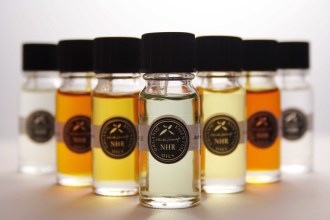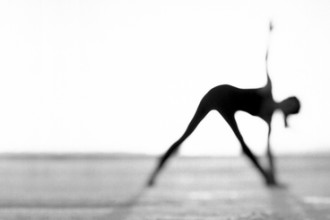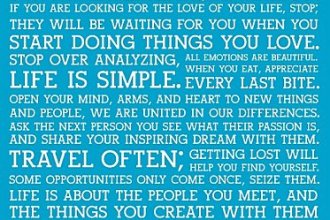How to Prevent & Relieve Anxiety with Pranayama
So often in life when experiencing fear, anxiety or panic, a sympathetic soul will say to us ‘just breathe’. But rarely do we fully comprehend the full weight of wisdom behind these kindly words. In yogic terms breath is the very source of prana, our vital life force or energy, and yogic tradition advocates the practice of pranayama – or ‘mastery of breath’.
To understand why the breath is such a powerful tool to both prevent and relieve anxiety and stress, we need to understand a little about our nervous system. The autonomic nervous system influences our digestive system, heart rate, immune function, and respiratory system. This system then branches out in to our sympathetic and parasympathetic nervous systems.
It is our sympathetic nervous system that creates our instinctive ‘flight or fight’ reactions. These are invaluable as they create our ability to energise, mobilise and complete tasks, but when they are sent in to overdrive, the continued elevation of blood pressure can cause multiple problems – including anxiety and stress.
The parasympathetic nervous system is often referred to as our ‘rest and digest’ mechanism and works to slow the mind and body. These sympathetic and parasympathetic branches are intended to work in union and equilibrium with each other, but too often our busy modern lifestyles cause the sympathetic nervous system to over function.
The secret to feeling balanced is to keep our sympathetic and parasympathetic nervous systems working in balance with each other. Our respiration – breath – is the only autonomic function that we have any external influence over. When we make the breath conscious rather than unconscious, we are engaging our brain, and in turn talking to and influencing our nervous system. To slow the breath is to slow the pace of your entire nervous system. Yoga means ‘union’, and the simple act of focusing on the breath, pranayama, unites body and mind in a unique way.
To experience the calming and centering practice of pranayama, here are a few simple techniques:
Conscious Breathing
The conscious breath is simply becoming aware of your own breathing. When people are anxious or stressed, they tend to take shallow breaths, breathing from their shoulders. Sit in a comfortable position, and place one hand on your belly and the other on your chest. Close your eyes and breathe normally at first. Pay attention to your breathing rate, the rise and fall of your chest, and how the air feels in your lungs. Then draw the breath a little deeper, down to your diaphragm so it causes your belly to expand like a balloon. Allow it to fill all the way up, expanding your rib cage and then your chest whilst keeping your shoulders relaxed, low and slightly back. Sit and focus on your breath for at least five minutes centering your mind with the thought ‘I am breathing in…I am breathing out’.
Breath of Fire
As a breath of fire has a more rapid rhythm it would seem a little converse to suggest it as a calming breath! However, breath of fire used as a daily practice is an incredibly powerful tool. It has been accredited with the benefits of releasing toxins and deposits from the lungs, mucous linings, blood vessels, and other cells, expanding the lung capacity, strengthening the nervous system to resist stress and repairing the balance between the sympathetic and parasympathetic nervous systems. Breath of fire also strengthens the navel chakra preparing you to act effectively, whilst increasing oxygen delivery to the brain, facilitating a focused, intelligent, and neutral state of mind (therefore allowing your experience of various situations to be less stress inducing)
To practice breath of fire sit comfortably with your eyes closed and pull your diaphragm up and in. This should cause a short sharp expulsion of air out through your nose. As the diaphragm then relaxes you will inhale automatically. All breath is taken through the nose with the mouth closed. Continue pulsing your diaphragm, with each cycle taking 2-3 seconds – it should be rapid, rhythmic, and continuous. Be careful to keep your body relaxed and the pulsing gentle and not too aggressive. Immerse yourself completely in the rhythm of the breath. Start by practicing for a minute or two every day, and increase this time as you become more comfortable with the technique.
Left Nostril Breathing
Breathing through the left nostril for five minutes is shown to reduce the activity of the sympathetic nervous system lowering your blood pressure and creating a calming effect. It activates the Ida Nerve Ending in the left nostril, which relates to calmness and relaxation. Left nostril breathing is also associated with the moon energy, which is changeable, feminine, yin, giving, and cool.
Sit comfortably and close your right nostril with your right thumb, your other fingers are stretched straight up like antennas. Your left hand can remain relaxed on your left knee. Close your eyes and begin to breathe long and deep filling your lower lungs first and then up and in to the ribs and chest. Exhale slowly and continue to breathe only through your left nostril for three minutes.
Remember that pranayama can be highly effective to relieve already present anxiety, but to receive the most benefit, implement these simple practices daily to create and maintain a generally more neutral, calm and steady state of being.
Science aside, when we focus on our breath, we draw deeply in to our innermost self and practice yoga in its purest form. We unite our body and mind so that we can unite with the moment. We get so caught up the never ending torrent of life and in the fears and fretting of yesterday and tomorrow, that we lose touch with the reality that all we ever have is a continuous stream of ‘now’. The moment, the now, is the peace and the stillness that resides within the very core of our being, regardless of what external stimuli may appear to be causing us ‘stress’.
Feel this endless space by using the breath. Then feel the endless space in between each breath. There you will find the infinite silence that exists in between the noise of our mind and of everyday life, that which is expansive, vibrant and always at peace.
Amy comes from a dance based background and believes that creativity in all its subtle forms is a powerful tool to help us connect to self and to the spiritual realm.
 She has taught numerous workshops for young people centered around a mix dance genre including cultural heritage such as Bangra and Tribal, old School Hip Hop and Street. All of her workshops have a strong emphasis on developing the ability to self explore and self express.
She has taught numerous workshops for young people centered around a mix dance genre including cultural heritage such as Bangra and Tribal, old School Hip Hop and Street. All of her workshops have a strong emphasis on developing the ability to self explore and self express.
She is now in training to teach Kundalini Yoga with the Kundalini Research Institute and is passionate about pursuing the spiritual path and awakening others to an alternative more peaceful and fulfilling way of life.Contact Amy at Radiant Yoga in Marbella, www.yoga-in-marbella.net, [email protected]




